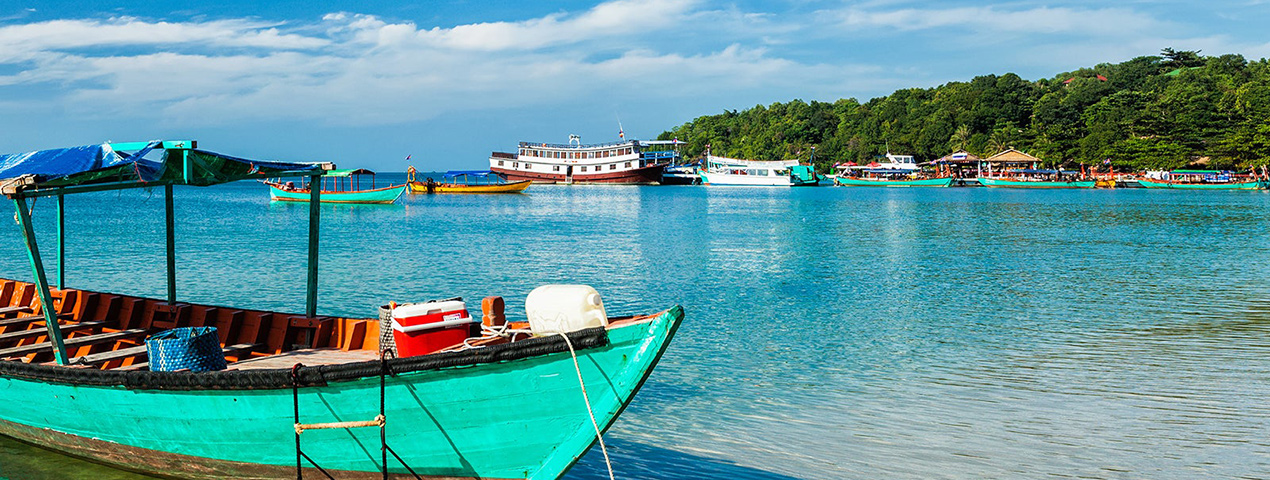Sihanoukville also known as Kampong Som is a coastal city in Cambodia and the capital of Sihanoukville Province, at the tip of an elevated peninsula in the country's south-west on the Gulf of Thailand. The city is flanked by an almost uninterrupted string of beaches along its entire coastline and coastal marshlands bordering the Ream National Park in the east. The city has one navigable river, the mangrove lined Ou Trojak Jet running from Otres Pagoda to the sea at Otres. A number of thinly inhabited islands – under Sihanoukville's administration – are near the city, where in recent years moderate development has helped to attract a sizable portion of Asia's individual travelers, students, and backpackers.
The city, which was named in honour of former king Norodom Sihanouk, had a population of around 89,800 people and approximately 66,700 in its urban center in 2008. Sihanoukville city encompasses the greater part of six communes (Sangkats) of Sihanoukville Province. A relatively young city, it has evolved in parallel with the construction of the Sihanoukville Autonomous Port, which commenced in June 1955, as the country's gateway to direct and unrestricted international sea trade. The only deep water port in Cambodia includes an oil terminal and a transport logistics facility. As a consequence, the city grew to become a leading national center of trade, commerce, transport, and process manufacturing.
Sihanoukville's many beaches and nearby islands make it Cambodia's premier seaside resort with steadily rising numbers of national visitors and international tourists since the late-20th century.
As a result of its economic diversity, the region's natural environment, and the recreational potential, an increasing number of seasonal and permanent foreign residents make Sihanoukville one of the most culturally varied and dynamic population centers in Cambodia. As of 2014 tourism remains insignificant in comparison with neighboring Thailand. Sihanoukville's future will largely be defined by the authorities' ability to successfully manage natural resources on the one hand and the necessities of urban and insular development, increasing visitor numbers, expanding infrastructure, the industrial sector and population growth, on the other.
important attractions:
|


